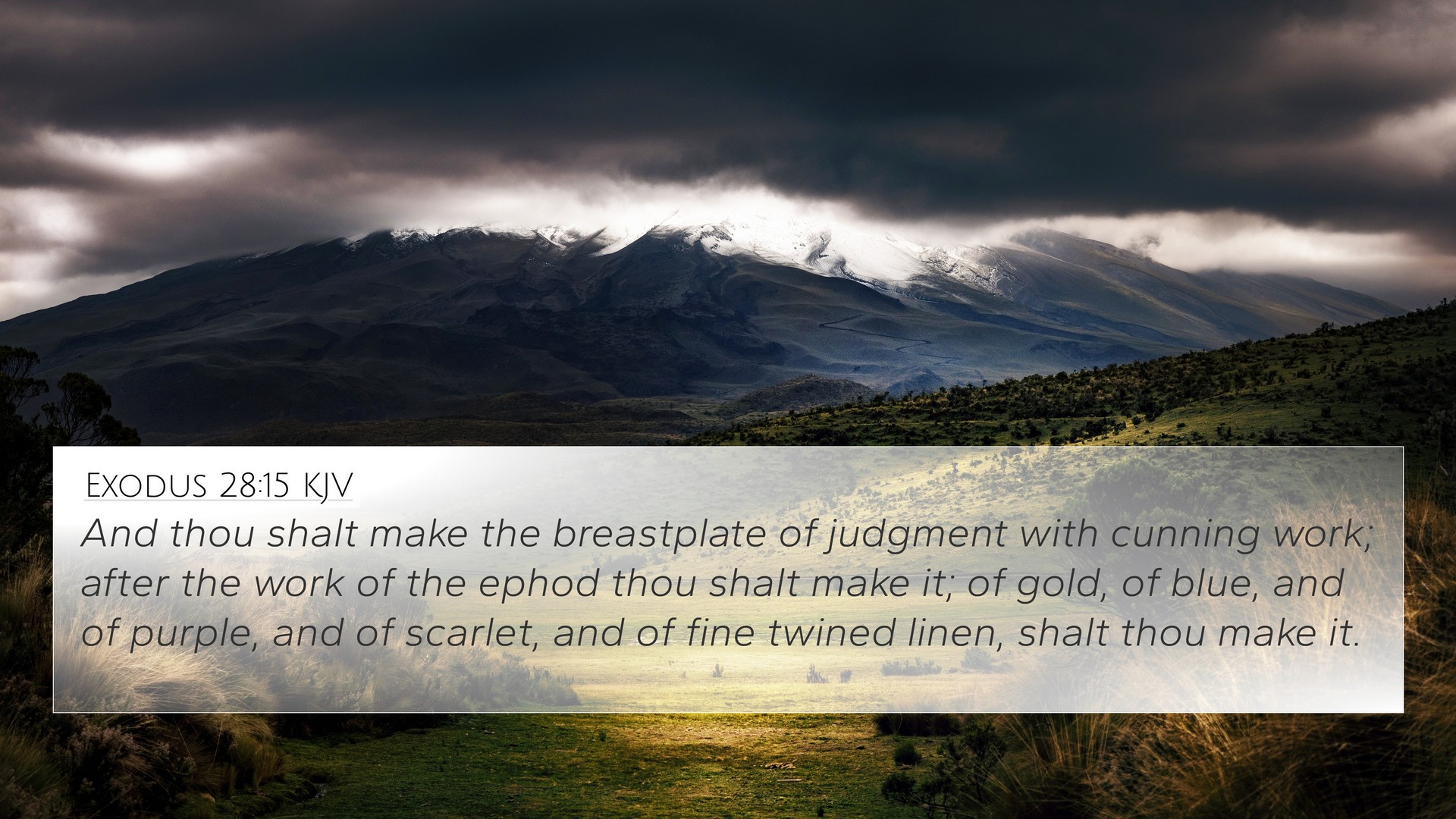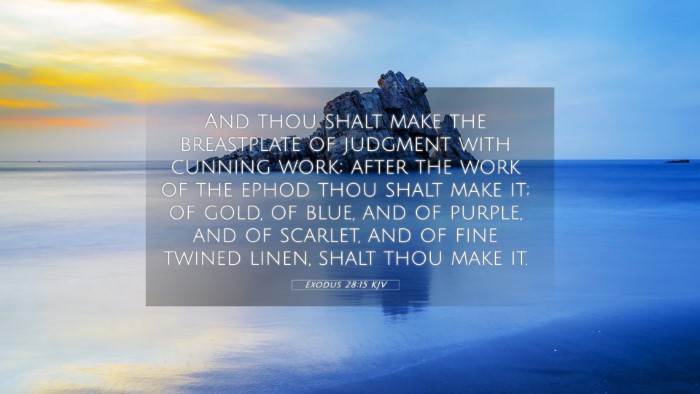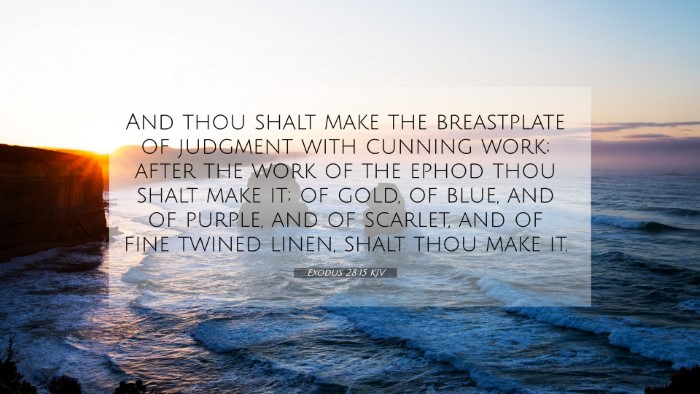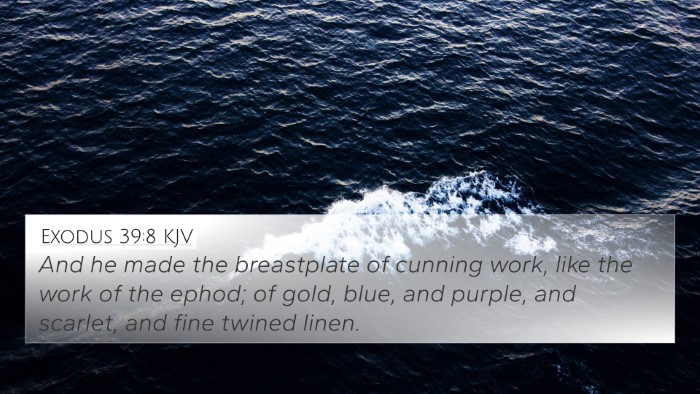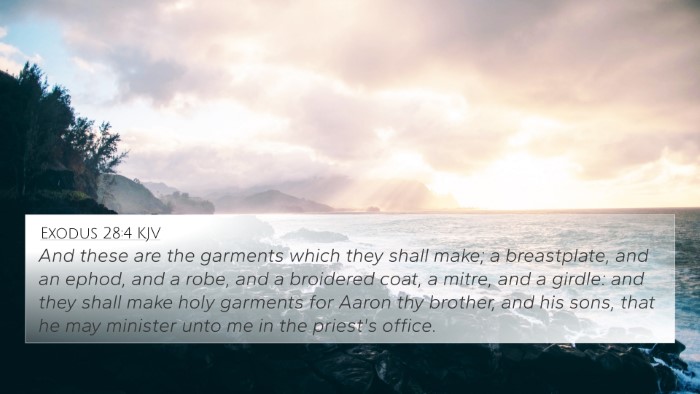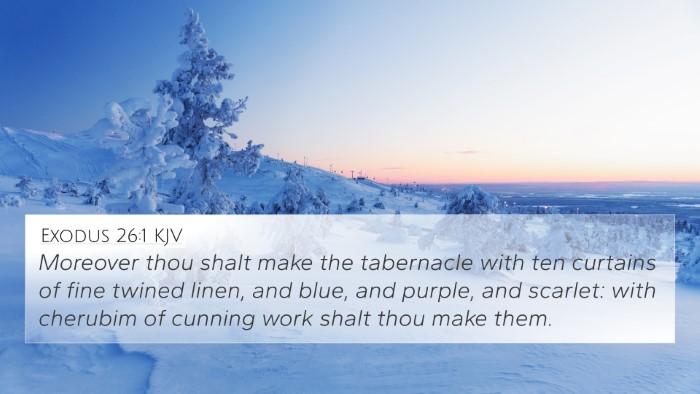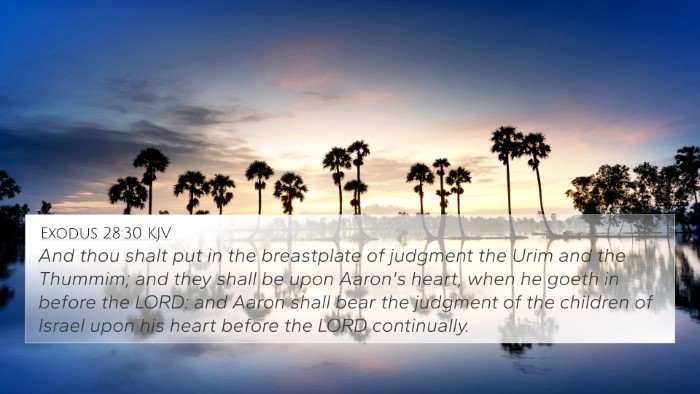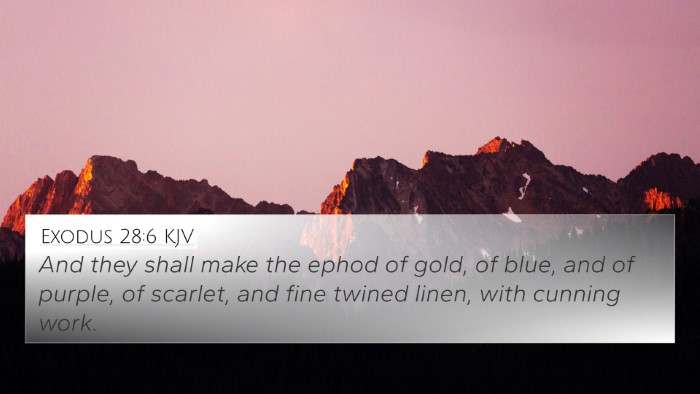Understanding Exodus 28:15
Exodus 28:15 states: "And thou shalt make the breastplate of judgment with cunning work; after the work of the ephod thou shalt make it: of gold, of blue, and of purple, and of scarlet, and of fine twined linen, shalt thou make it." This verse is nestled within God's instructions to Moses regarding the garments for Aaron, the High Priest, and sets the stage for understanding the significance of the priestly attire in a spiritual context.
The breastplate of judgment is particularly important as it symbolizes God's guidance, discernment, and the representative nature of the High Priest before the people of Israel. The materials mentioned—gold, blue, purple, scarlet, and finely woven linen—are not only symbols of royalty and holiness but also connect to the craftsmanship required for sacred service.
Key Themes and Symbolism
- Divine Guidance: The breastplate served as a means for Israel to discern God's will.
- Representation: The High Priest stood as an intercessor for the people, wearing symbols of their collective judgment and relationship with God.
- Material Significance: The precious materials used in the breastplate reflect the glory and holiness of God.
- Covenant Elements: The breastplate incorporates elements that speak to the covenant relationship Israel had with God.
Insights from Commentaries
Matthew Henry emphasizes the meticulous nature of the breastplate's design and the importance of following divine instructions exactly. This highlights God's desire for order and beauty in worship.
Albert Barnes reflects on the dual symbolism of the breastplate: it serves to remind the High Priest of his duties towards God and the people, as he carries their names and judgments.
Adam Clarke draws attention to the spiritual implications of the materials used, suggesting they symbolize the richness and depth of God's relationship with His chosen people.
Cross-references and Thematic Connections
Exodus 28:15 connects with several other scriptures, demonstrating a cohesive theme throughout the Bible regarding the role of the priest and God's guidance:
- Leviticus 8:8: The ordination of Aaron and his sons.
- Numbers 27:21: The practice of seeking counsel from the Lord through the priest, emphasizing the breastplate's purpose.
- 1 Samuel 28:6: King Saul seeks God’s guidance, showing the importance of divine counsel.
- Hebrews 5:4: Discusses the priesthood and its divine appointment, linking back to Aaron's role.
- Revelation 1:6: Highlights believers as a kingdom of priests, expanding the priestly themes to New Testament doctrine.
- 1 Peter 2:9: Believers are chosen to be a royal priesthood, echoing the significance of the breastplate.
- Exodus 39:14: Further details on the stones used in the breastplate, reflecting the Israelites' names before God.
- Matthew 5:14: Calls believers to be a light to the world, similar to how the High Priest served Israel.
- Romans 12:1: Our call to present ourselves as living sacrifices parallels the sacrificial system signified by the priesthood.
- Hebrews 8:1-2: Discusses the heavenly priesthood of Christ, fulfilling the role of the earthly priests.
Conclusion: The Importance of Cross-referencing
Cross-referencing verses like Exodus 28:15 allows for deeper insights into scripture, showcasing the interconnectedness of Biblical themes. Tools for Bible cross-referencing such as a Bible concordance or a cross-reference Bible study guide can enhance understanding and provide clarity in interpreting God's Word. This method of study enriches the experience of reading the Bible and reveals the rich tapestry of scriptural connections.
